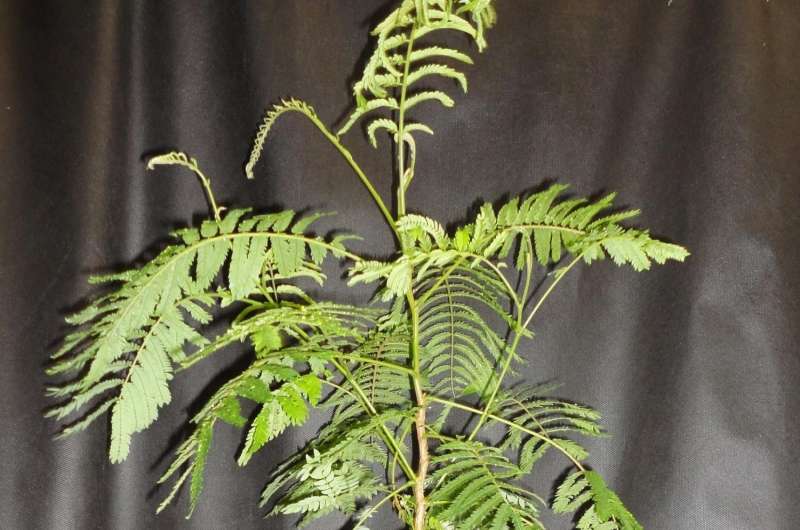Container design important for endangered plant nursery

Recent research at the University of Guam has shown that the use of traditional hard plastic containers in a conservation nursery reduced the quality of the roots of an endangered tree species. The experimental results appeared in the May 2016 issue of the international journal Plant Root. The model plant was Serianthes nelsonii, a species with a known endemic range of only two islands in the Mariana Island archipelago.
Authors Thomas Marler and Cameron Musser employed container designs that successfully stopped the growth of roots when they reached the surface of rigid plastic container walls as a means of validating how traditional containers generate inferior root morphology. The experimental protocols revealed that traditional plastic containers led to an abundance of root growth in the bottom of containers, which led to a paucity of lateral roots following transplanting. Lateral roots are critically important for stabilizing plants in tropical cyclone force winds (hurricanes and typhoons). In order to illuminate the importance of the published results, the authors called on the fact that more of these tropical cyclones occur in the Mariana Islands than in any other geographic location of the United States.
Growing trees in traditional hard plastic containers forces the root system to endure an unnatural constricted environment. For some species, the tree can correct the deformed root system following transplanting. But plants that produce woody stems and roots are particularly susceptible to the damage. For these species, the deformed root system resulting from container nursery production may limit plant growth and quality for extended periods of time following transplanting. For these reasons, species-specific research is needed to quantify the relative damage that traditional containers impose on the roots of nursery plants.
"On-site research that improves management decisions ensures local relevance for conservation of Guam's biological diversity," said Anne Brooke, Conservation Program Manager for Naval Facilities Engineering Command, Marianas. "Empirical studies such as this one fulfill this research need for the consortium of agencies involved in natural resources conservation."
More information: Thomas Marler et al, Chemical and air pruning of roots influence post-transplant root traits of the critically endangered Serianthes nelsonii, Plant Root (2016). DOI: 10.3117/plantroot.10.21
Provided by University of Guam

















